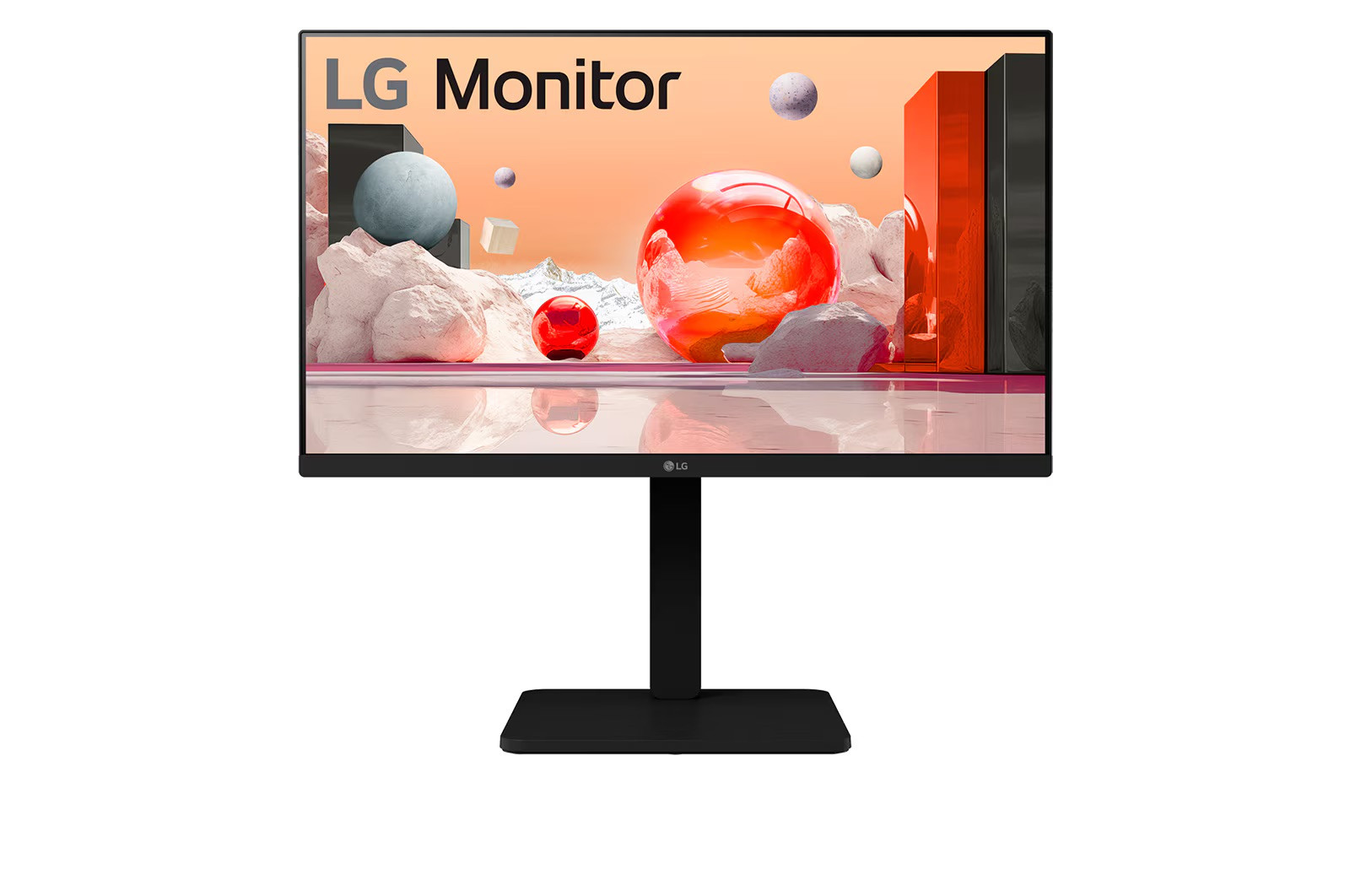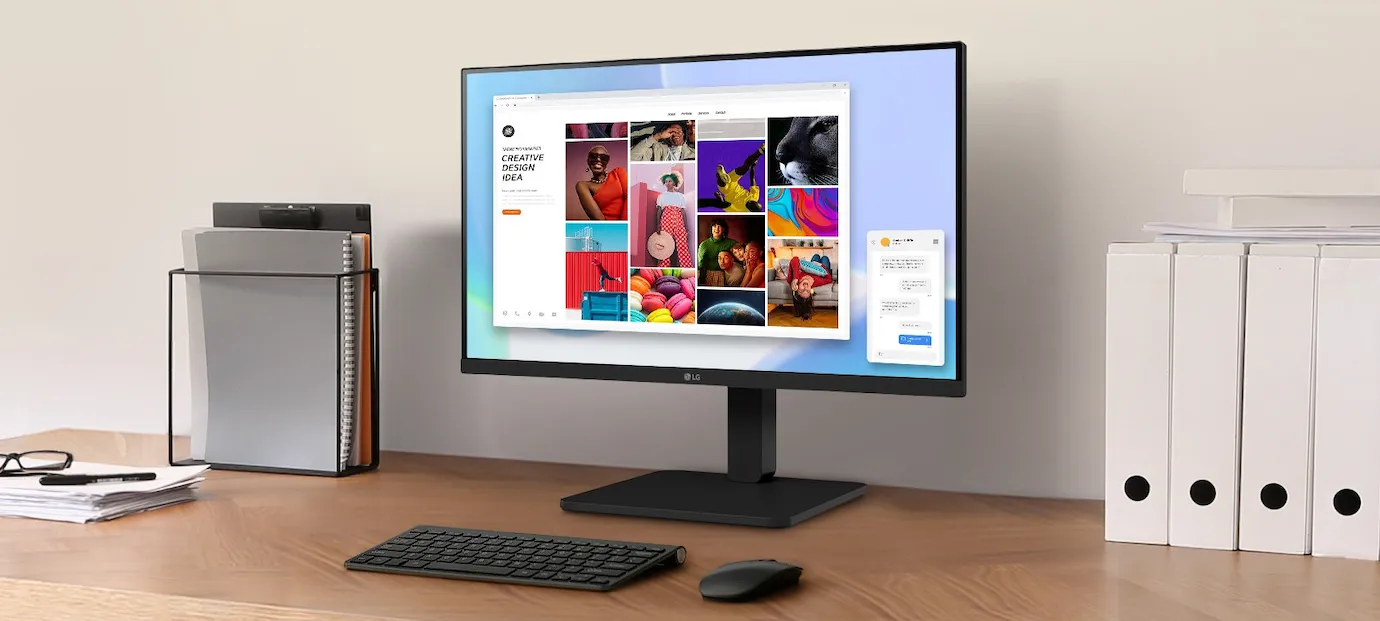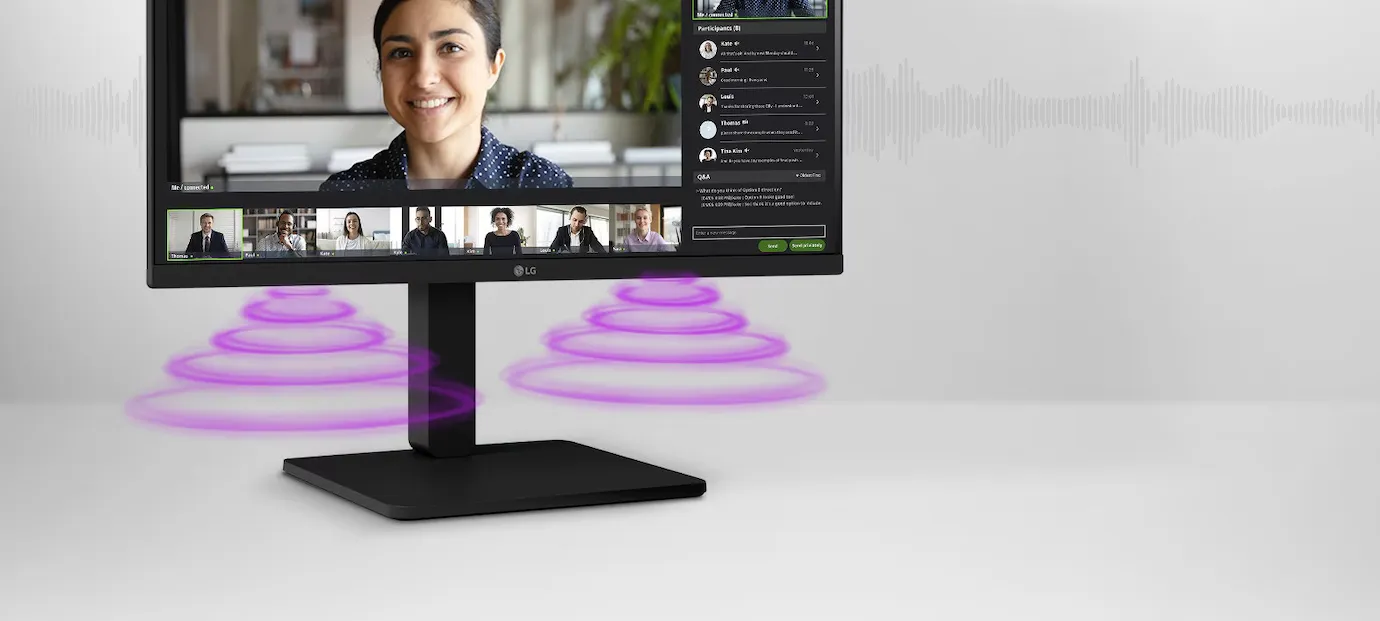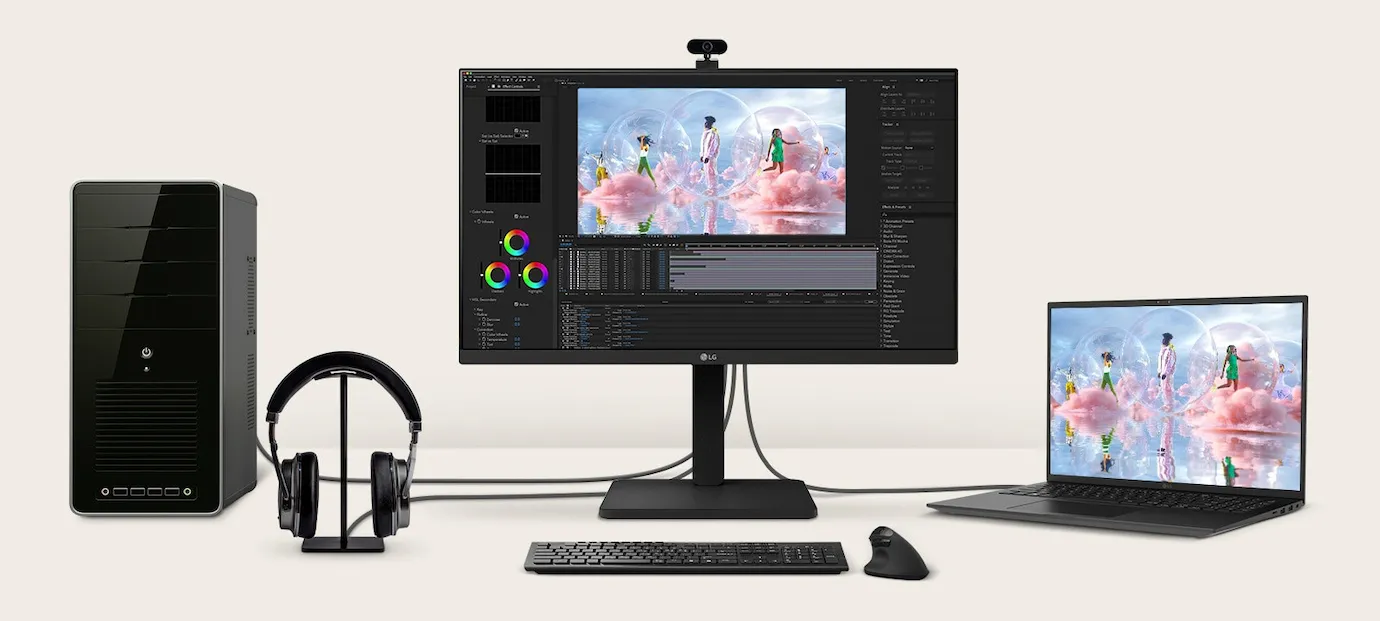







































£137.22*
- Resolution 1920 x 1080 Full HD
- Diagonal 24"
- Panel type IPS
- Refresh Rate 100Hz



Product information
The LG 24BA560 monitor impresses with a 23.8-inch Full HD IPS display that delivers brilliant colours and clear images from all viewing angles. With a refresh rate of 100 Hz and ergonomic design features, this monitor offers everything you need for comfortable and productive use in the office or home office. Thanks to integrated speakers and a wide range of connectivity options, the LG 24BA560 is perfect for virtual meetings and everyday use in professional environments.
The technical data at a glance:
- Display: 23.8" Full HD (1920x1080) IPS
- Refresh rate: 100Hz
- Ergonomics: Height-adjustable, tiltable, swivelling, pivot function (on both sides)
- Connectivity: Various interfaces (multi-ports)
- Special features: Integrated speakers, integrated power supply
- Software: LG Switch App, Command Line Interface (CLI)
- Comfort: Reader Mode, Flicker Safe
- Environmental standards: EPEAT & Energy Star certified
Colours and clarity from every angle
The 23.8-inch Full HD IPS display of the LG 24BA560 not only delivers crisp images, but also precise colours that appear consistently clear and vivid from any angle. This feature makes the monitor particularly useful for workplaces where several people often have to look at the screen - such as in offices, public facilities or customer consultations.

Optimised productivity thanks to high refresh rate
With a refresh rate of 100 Hz, the LG 24BA560 ensures a smooth display, even when moving quickly or switching between different programmes. This reduces screen distortions such as motion blurand increases efficiency at work, be it when editing documents, using business software or during video conferences.
Integrated speakers for virtual meetings
The LG 24BA560'sin-built speakers provide clear audio quality without the need for additional external devices. This is especially handy for virtual meetings or online training sessions where a clean and organised workspace is needed without additional cables and speakers.

Ergonomic design for maximum comfort
The LG 24BA560 offers a variety of ergonomic customisation options, including height adjustment, tilt and swivel functionsas well as a pivot function that allows the monitor to be rotated on both sides. This flexibility ensures a comfortable working environment, especially for those who spend long hours in front of the monitor. In addition, the ergonomic design facilitates communication with colleagues and customers by allowing the screen to be customised.
Visual comfort with Reader Mode and Flicker Safe
The Reader Mode of the LG 24BA560reduces the blue components of the light and adjusts the brightness to make reading texts and documents more comfortable. In combination with Flicker Safe technology, which minimises the flickering of the screen, the eyes are protected, even during long periods of screen use.

With its thoughtful features and modern design, the LG 24BA560 is the perfect choice for versatile, professional working environments.
Technical data
| Name | LG 24BA560-B 24" IPS Monitor, 1920 x 1080 Full HD, 100Hz |
|---|---|
| Article number | 1000033154 |
| GTIN/EAN | 8806096015384 |
| Manufacturer SKU | 24BA560-B.AEUQ |
| EPREL ID | 1941610 |
| Model name | 24BA560-B |
| Brand | LG |
| Product Type | Monitor |
| Product Series | LG Business Series |
| Panel type | IPS |
| Resolution | 1920 x 1080 Full HD |
| Diagonal | 24" |
| Aspect Ratio | 16:9 |
| Viewing angle - Horizontal | 178° |
| Viewing angle - Vertical | 178° |
| Max. Brightness | 200 cd/m² |
| Refresh Rate | 100Hz |
| Support - VESA | 100 x 100 |
| Inputs | 1x Displayport , 1x HDMI , 1x USB-B |
| Outputs | 1x USB-A |
| Colour | Black |
| EEK Spectrum | A to G |
| Energy efficency class | D |
| Condition | New |
| Warranty | 36 Month |
| Warranty type | Swap service Service and support information |
Product safety
| Person responsible for the EU |
|---|
| LG Electronics Deutschland GmbH |
| Alfred-Herrhausen-Allee 3-5 |
| 65760 Eschborn |
| Germany |
| info@lge.de |



